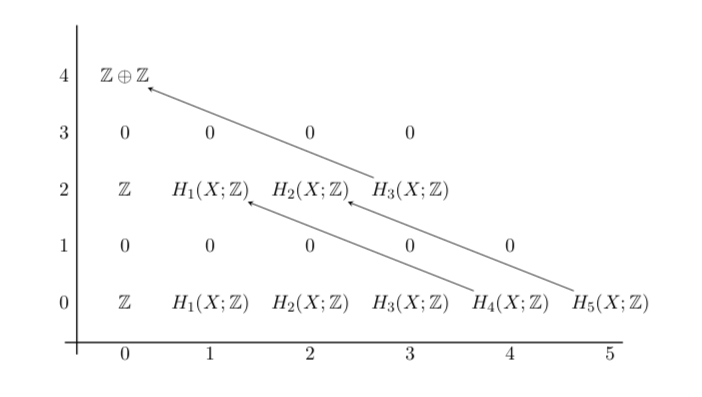I need some guidance in identifying the third differential in the homology AHSS for $\Omega_{\ast}^{\text{Spin}^c}(X)$ in degrees $\leq 4$.
Remember that $\pi_0(M\text{Spin}^c)=\Bbb Z$, $\pi_2(M\text{Spin}^c)=\Bbb Z$, $\pi_4(M\text{Spin}^c)=\Bbb Z\oplus \Bbb Z$ and zero in degree $1,3$. So if we consider the (homologically graded) AHSS $$ E_{p,q}^2 = H_p(X;\Omega_{q}^{\text{Spin}^c} ) \Rightarrow \Omega_{p+q}^{\text{Spin}^c}(X)$$ we immediately see that there are no second differentials and the third page looks like this (in the portion I'm interests in)
Can I conclude something akin to the cohomology AHSS (See here) where the first non-trivial differential is a stable cohomology operation? what bothers me is that having to deal with integer coefficients homology I don't have (in general) a perfect pairing with cohomology where the linked question would apply.
Is there an isomorphism in low degree homotopy group for $M\text{Spin}^c$ (I'm thinking of something like $M\text{Spin}$ is weakly homotopy to $ku$ up to degree $7$.) We could leverage this to compute the AHSS, but I can't find much online.
Any comments/observations are really appreciated! Thanks a lot!

